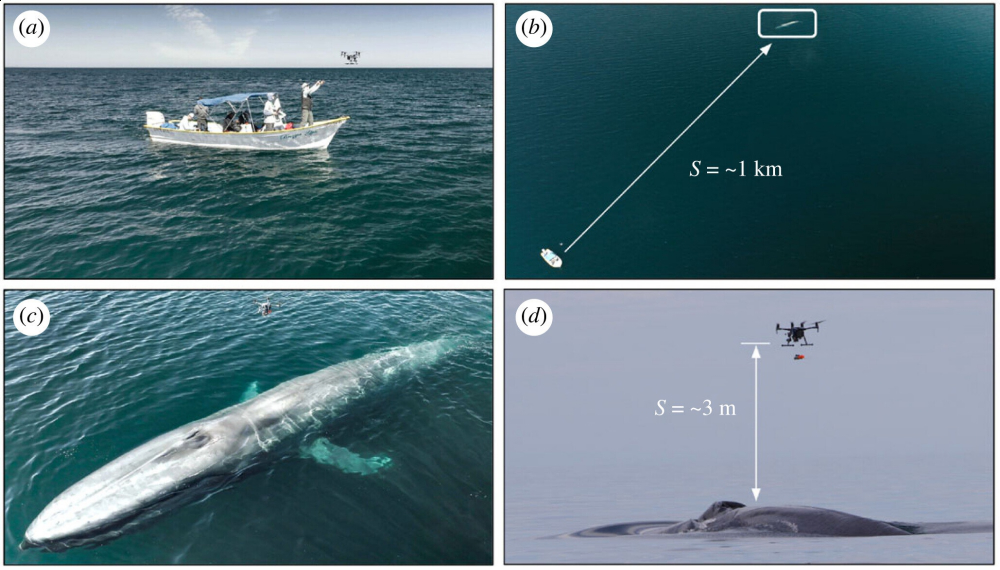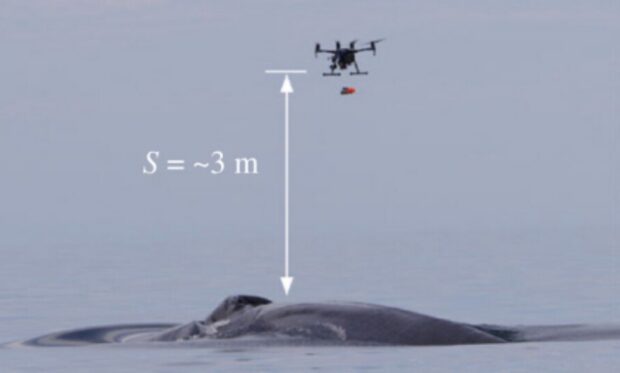A team of marine biologists affiliated with several institutions in the U.S., working with a colleague from Mexico, has found that it is possible to use drones to affix suction cup tags to whales as an alternative to doing it manually. In their study, reported in the journal Royal Society Open Science, the group tested the use of an uncrewed-aerial-system-based tag deployment system with free swimming whales.
Scientists have been studying whales for many years and have developed a wide range of tools for improving their methods. One of the more useful tools are biologging tags, which are sensors affixed to the body of a whale to collect data about its behavior and track its location. The most common type of biologging tag used with whales involves the use of suction cups to hold sensors firmly to the skin.

(a) Hand launch and recovery of UAS from boat. (b) Animals tagged at distances of over 1 km without the need to rapid/close approach. (c) UAS with CATS tag payload over blue whale. (d) A representative tagging attempt with a CATS tag from approximately 3 m. Credit: Royal Society Open Science (2023). DOI: 10.1098/rsos.221376
The traditional means of affixing such tagging devices is to sail to a part of the sea where whales are sighted and then deploy a small boat. The scientists then move close to the whale and then affix a suction tag to its body using a long pole. Such a method has been found to disturb the whales, resulting in anxiety and changes in their behavior, subverting the point of studying them in the first place. It has also been found to be dangerous for those in the boat. To get around both problems, the team on this new effort has tried an entirely new approach—using drones.

Photo sequence showing DTAG deployment using the drop system, and the release of tag holder and fins on impact that float for recovery and reuse. Credit: Royal Society Open Science (2023). DOI: 10.1098/rsos.221376
The researchers first developed a pneumatic system for launching tags from a variety of drones using a small rocket-like device. The system was tested in the lab and at other sites using the DJI Matrice M210 V2 and the DJI Inspire 2 drones. Next, they climbed aboard a research vessel and headed to Loreto Bay National Park, off the coast of Mexico. There, they sent their drone out to tag whales 29 separate times, deploying the suction cup tags successfully 21 times.
A test run. Credit: Royal Society Open Science (2023). DOI: 10.1098/rsos.221376
The researchers also note that the process was faster than using a boat—flight times for the drones averaged just 2.45 minutes. They were also able to keep the research ship father away from the whale, preventing stress. On average, the flight distance was 490 meters. They also noted that reaction to the tagging by the whales was minimal.
More information: David N. Wiley et al, Deployment of biologging tags on free swimming large whales using uncrewed aerial systems, Royal Society Open Science (2023). DOI: 10.1098/rsos.221376

